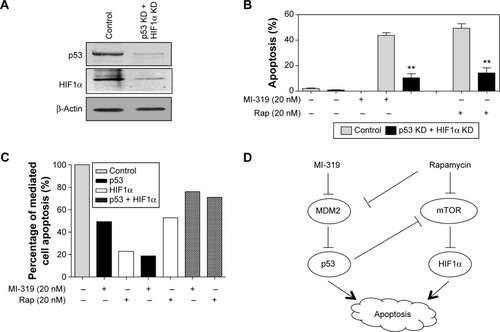Figures & data
Figure 1 Inhibition of MDM2 induces cell apoptosis and p53 upregulation in human RCC cells.
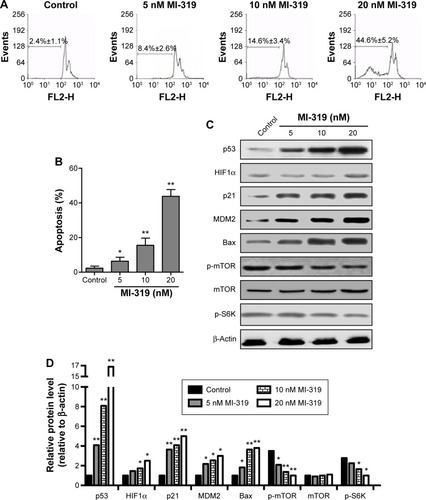
Figure 2 Inhibition of mTOR signaling leads to apoptosis and remarkable HIF1α upregulation in human RCC cells.
Abbreviation: Rap, rapamycin.
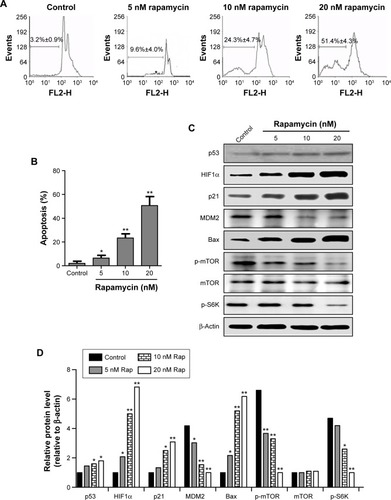
Figure 3 p53 and HIF1α mediate MDMD2 and mTOR inhibition-induced apoptosis respectively.
Abbreviations: siRNA, small interfering RNA; Rap, rapamycin.
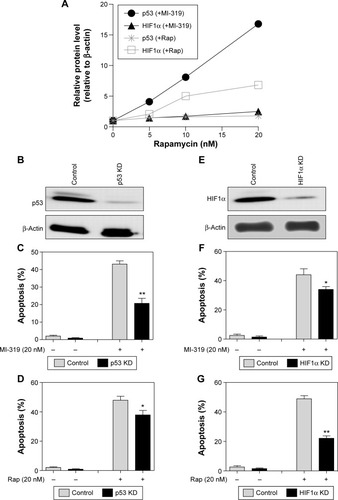
Figure 4 The synergistic roles of MDM2 and mTOR inhibition in A498 cell apoptosis.
Abbreviations: MI, MI-319; Rap, rapamycin.
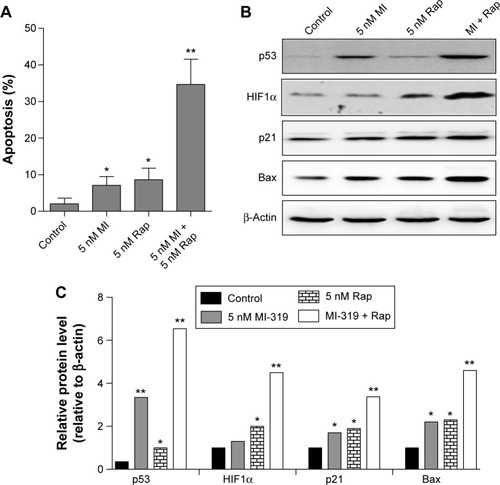
Figure 5 p53 and HIF1α cooperatively mediate antagonist-induced apoptosis.
Abbreviations: siRNA, small interfering RNA; KD, knockdown; Rap, rapamycin.
